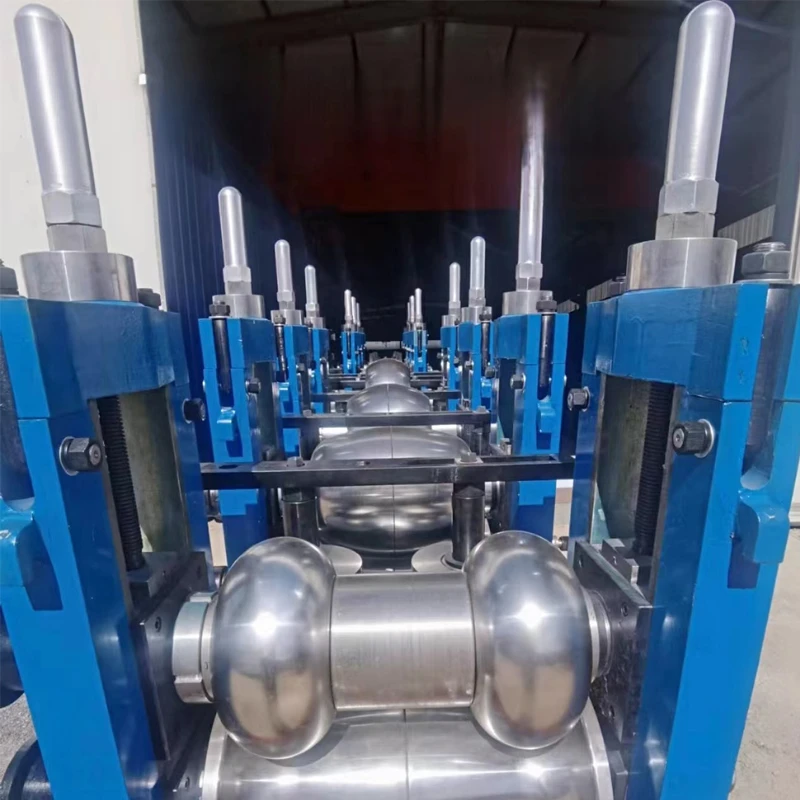types of molding machine
Types of Molding Machines
Molding machines play a crucial role in various manufacturing processes, primarily in the production of plastic parts and components. They utilize different techniques to shape materials, typically plastic or metal, into specific forms. Understanding the types of molding machines is essential for industries involved in manufacturing, as each machine offers unique advantages tailored to different production needs.
1. Injection Molding Machines
Injection molding is one of the most common methods used in the production of plastic parts. In this process, plastic pellets are heated until they melt and then injected into a mold under high pressure. Once the plastic cools and solidifies, the mold is opened to reveal the finished part. There are two main types of injection molding machines toggle and hydraulic.
- Hydraulic Injection Molding Machines These use hydraulic pressure to drive the injection unit. They offer high clamping force and are suitable for large, heavy molds. Hydraulic machines are known for their reliability and are commonly used in high-volume production runs.
- Servo-driven Injection Molding Machines These machines utilize servo motors for both the injection and clamping processes. They are energy efficient, provide precise control, and reduce cycle times, making them an excellent choice for industries with tighter production schedules.
2. Blow Molding Machines
Blow molding is primarily used for manufacturing hollow plastic components, such as bottles and containers. The process involves inflating hot plastic within a mold to create a hollow shape. There are three main types of blow molding
- Extrusion Blow Molding In this method, melted plastic is extruded into a parison, which is then inflated to fill the mold. This technique is widely used for producing various types of containers and is known for its simplicity and efficiency.
- Injection Blow Molding This process combines injection molding and blow molding. A preform is created through injection molding, and then air is blown into it to form the final shape. This method allows for enhanced precision and is often used for high-quality containers.
types of molding machine

- Stretch Blow Molding This technique is used mainly for making PET bottles
. A preform is stretched and then blown into shape, which enhances the material's strength and transparency.3. Compression Molding Machines
Compression molding is another prevalent technique, particularly suited for thermosetting plastics, rubber, and composite materials. In this process, a preheated material is placed into an open mold cavity, and pressure is applied to shape it. This method is particularly advantageous for producing larger parts and components with consistent density and rigidity.
4. Rotational Molding Machines
Rotational molding, or rotomolding, is a process ideal for creating large hollow parts. In this method, the material is placed in a mold that is rotated on two axes, ensuring even distribution of the material along the mold's walls. This technique allows for the production of durable and lightweight products, such as tanks and playground equipment.
5. 3D Molding Machines
Although relatively new in the molding machine landscape, 3D molding machines utilize additive manufacturing techniques to create parts layer by layer. This method allows for great design flexibility, enabling manufacturers to produce complex geometries and customized components without the need for expensive molds.
Conclusion
In conclusion, selecting the right type of molding machine depends on several factors, including the material being used, the desired part shapes, production volume, and quality requirements. From injection molding to 3D printing, each method has its own set of advantages and applications. Manufacturers must evaluate their specific production needs to choose the most appropriate molding machine for optimal efficiency and product quality. Understanding these diverse molding methods is essential in today’s manufacturing landscape, where innovation is key to staying competitive.
-
High Frequency Straight Seam Welded Pipe Production Line-BzZhou Xinghua Machinery Equipment Manufacturing Co., LTD.|Precision Welding, High EfficiencyNewsJul.30,2025
-
High Frequency Straight Seam Welded Pipe Production Line|BzZhou Xinghua|Precision Welding&EfficiencyNewsJul.30,2025
-
High Frequency Straight Seam Welded Pipe Production Line - BzZhou Xinghua|Precision Engineering&EfficiencyNewsJul.30,2025
-
High-Frequency Straight Seam Welded Pipe Production Line-BzZhou Xinghua Machinery Equipment Manufacturing Co., LTD.NewsJul.30,2025
-
High-Frequency Straight Seam Welded Pipe Production Line-BzZhou Xinghua Machinery Equipment Manufacturing Co., LTD.|Precision Manufacturing, High EfficiencyNewsJul.30,2025
-
High Frequency Straight Seam Welded Pipe Production Line-BzZhou Xinghua Machinery Equipment Manufacturing Co., LTD.|Precision Steel Pipe Manufacturing&Industrial EfficiencyNewsJul.29,2025


